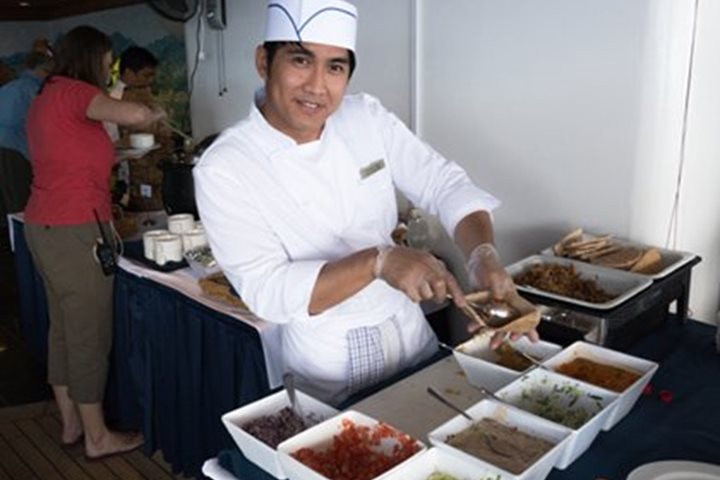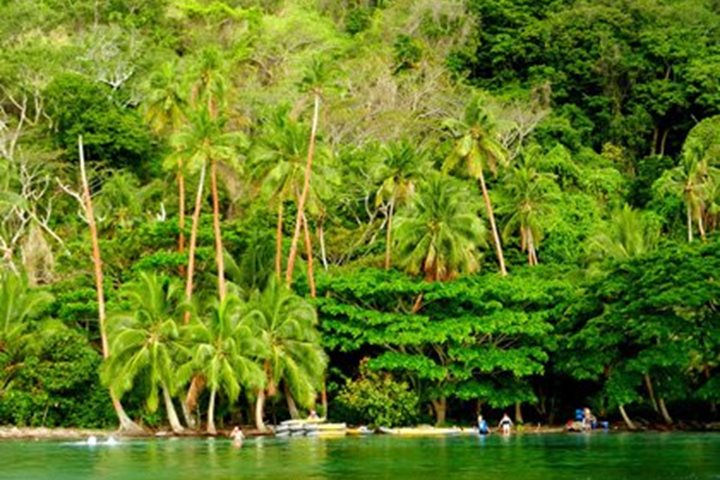After a sumptuous gourmet dinner last night we slept well with vivid dreams of exotic locations, only to wake and find ourselves still part of the dream: still anchored off the lush green forested hill of Taveuni. We will remain here for a second day and explore some of the hinterland of this beautiful island. On a clear, sunlit morning the first adventurers were up by 0600, to seek some of the rich birdlife of the island. In a convoy of four jeeps, we followed the coast road admiring cultivated farmland all along the coastal plain. Taveuni, third largest of the Fijian islands, has long been known as “The Garden Isle.” With its high rainfall and fertile soils it grows a huge range of traditional food crops, many of which we passed: pineapples, cassava, taro, sweet potato, bananas, pawpaws, coconuts, and peppers. Copra is no longer the economic mainstay of these islands, and though tall coconut palms extend well inland, they only provide local consumption now. We soon turned up into the hills, climbing through scattered clumps of forest and past giant mango trees. Fijian goshawks were circling over the trees, collared lories (scarlet-breasted parrots) flew between the coconuts, and we could hear the shrill calls of white-eyes. Once on foot we noted jungle mynahs, heard the Vanikoro flycatcher, and came to a deep gully with dense forest on the far side. Here live some of the elusive birds we had come to find: peale’s (or barking) pigeon, the wattled honeyeater, but although we could hear its steady ‘tok tok’ call, the endemic orange dove eluded us. Giant trees and an understorey of tree ferns up here create one of the most spectacular rainforests in the Pacific, a delight to behold.
A second group of hikers left the ship at 0800 and headed along the coast to the Bouma Forest, then upriver along a fine grass track lined with tropical flowers to the spectacular Bouma Falls, where the river plunges over a volcanic cliff into a deep pool. From here the path zigzagged up steeply higher into the hills, but the climb was worth all the effort to reach the second set of falls on the Tavoro River; many swam in the pool at the base to revive themselves for the descent. The third group of guests left the ship at the more civilised time of 0900, to attend Sunday service at the Catholic Church in Waitabu Village. The congregation welcomed our presence in the church and sang lustily in glorious close harmony to the hymns, a sound so evocative of the Pacific. They even sang a farewell song as we climbed back on the bus, and we still had time left to visit the Bouma Waterfall as the others had done, and bathe in the crystal clear waters of the Tavoro River. The village name Waitabu (Wy-tam-Bu) means “sacred waters” in Fijian. It is reassuring to see how clear and unpolluted both river and ocean still remain, so this ancient name still resonates today.
This has been a fitting end to our voyage since the Solomons, and we celebrated our good fortune and vivid memories with a final slide show, plus much collective good cheer and merriment at the Captain’s farewell dinner as we steam through the night to Lautoka.





